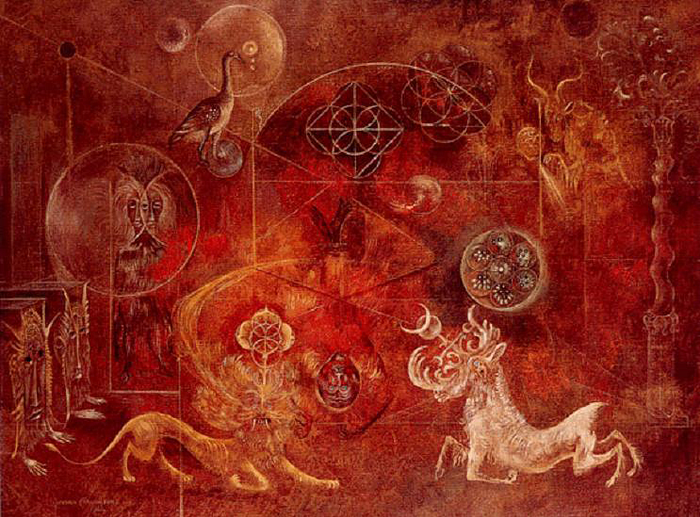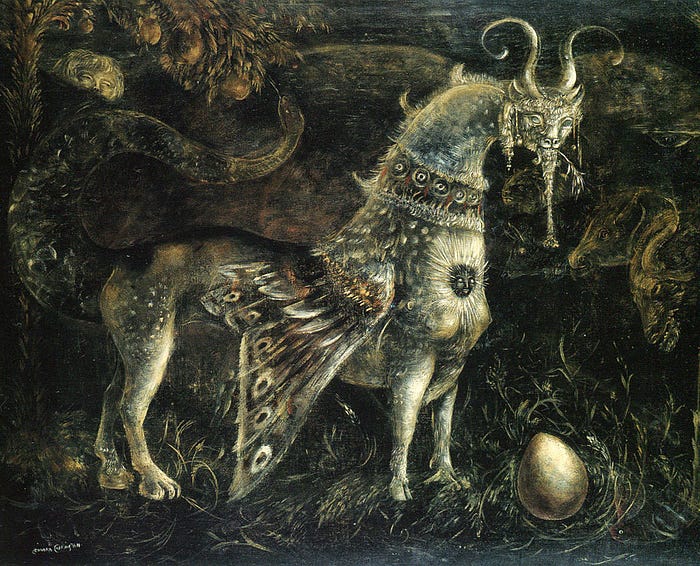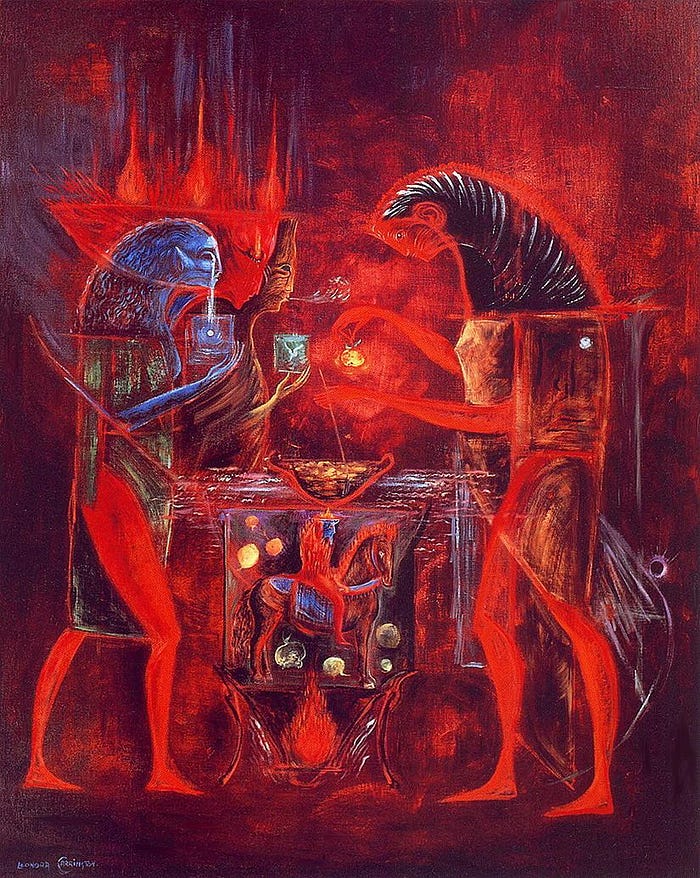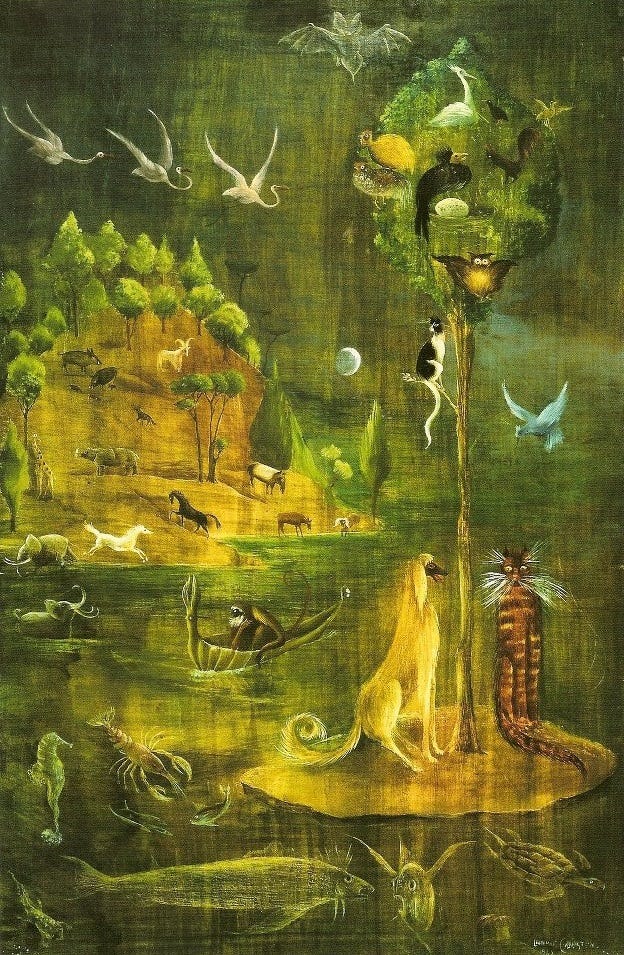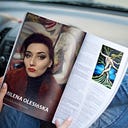Master of Surrealism Leonora Carrington
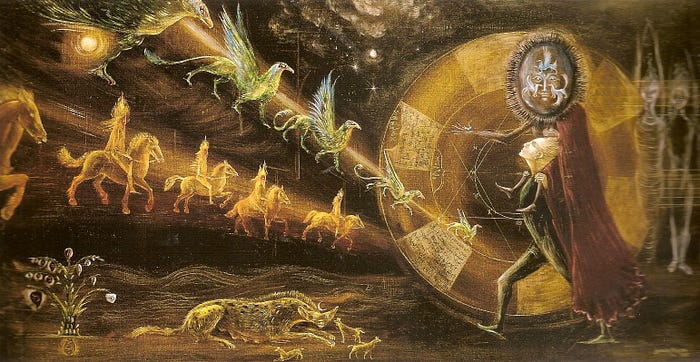
“In Self-Portrait (1938), Carrington offers her own interpretation of female sexuality by looking toward her own sexual reality rather than theorizing on the subject, as was custom by other Surrealists in the movement. Carrington’s move away from the characterization of female sexuality subverted the traditional male role of the Surrealist movement. Self-Portrait (1938) also offers insight into Carrington’s interest in the ‘alchemical transformation of matter and her response to the Surrealist cult of desire as a source of creative inspiration.’ The hyena depicted in Self-Portrait (1938) joins both male and female into a whole, metaphoric of the worlds of the night and the dream. The symbol of the hyena is present in many of Carrington’s later works, and it was even used to depict Carrington in Max Ernst’s work “La Debutante” in his book The Oval Lady.Her book The Hearing Trumpet deals with aging and the female body. It follows the story of older women who, in the words of Madeleine Cottenet-Hage in her essay “The Body Subversive: Corporeal Imagery in Carrington, Prassinos and Mansour”, seek to destroy the institutions of their imaginative society to usher in a “spirit of sisterhood.” The Hearing Trumpet also criticizes the shaming of the nude female body, and it is believed to be one of the first books to tackle the notion of gender identity in the twenty-first century. Carrington’s views of sexuality, however, differ from contemporary feminists in that she sees maternity as a key experience to femininity. Carrington stated, “We, women, are animals conditioned by maternity…. For female animals love-making, which is followed by the great drama of the birth of a new animal, pushes us into the depths of the biological cave”Carrington’s art often depicts horses, as in her Self-Portrait (Inn of the Dawn Horse) and the painting The Horses of Lord Candlestick Her fascination with drawing horses began in her childhood. Horses also appear in her writings. In her first published short story, “The House of Fear”, Carrington portrays a horse in the role of a psychic guide to a young heroine. In 1935, Carrington’s first essay, “Jezzamathatics or Introduction to the Wonderful Process of Painting”, was published before her story “The Seventh Horse”. Carrington often used codes of words to dictate interpretation in her artwork. “Candlestick” is a code that she commonly used to represent her family, and the word “lord” for her father”………More
